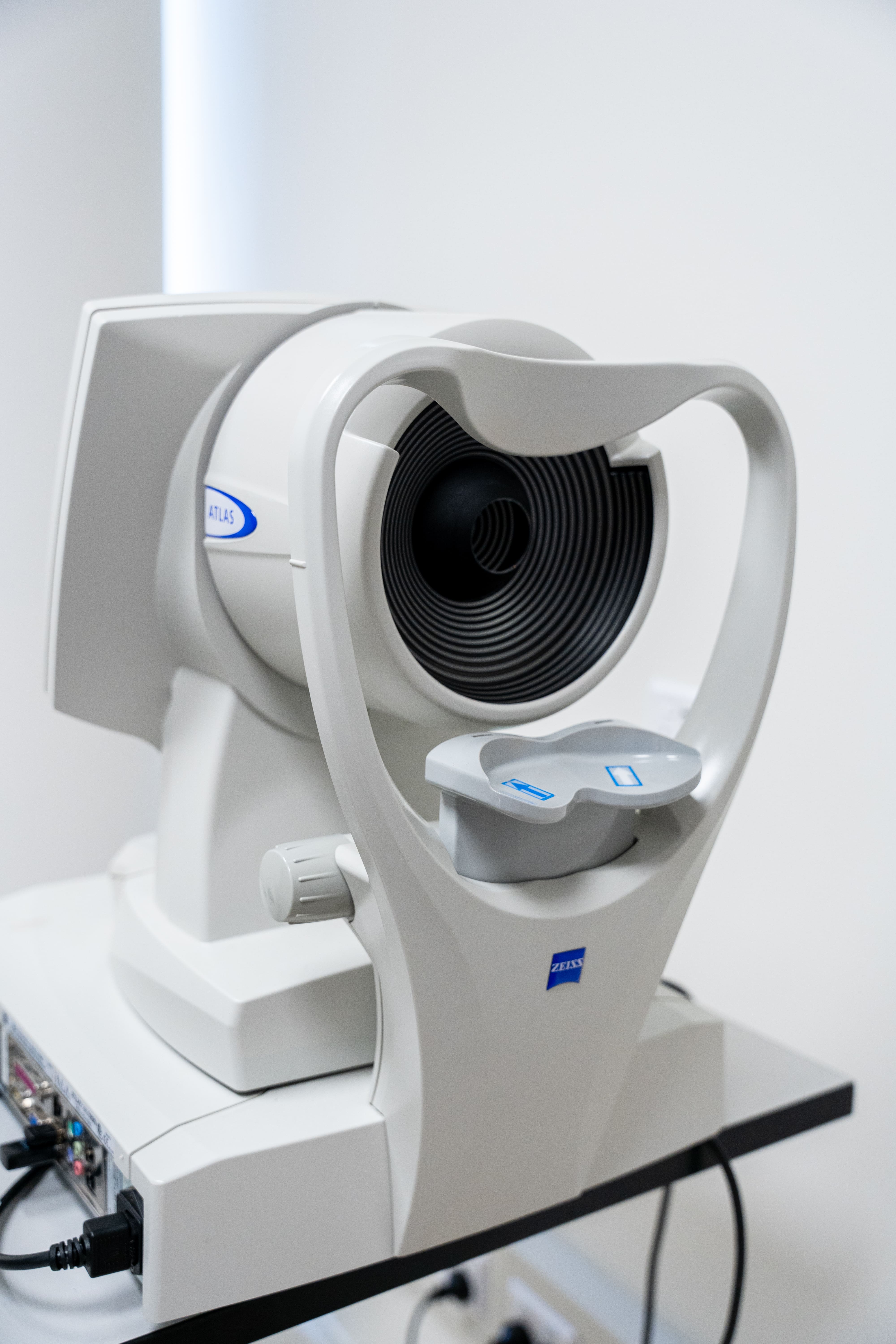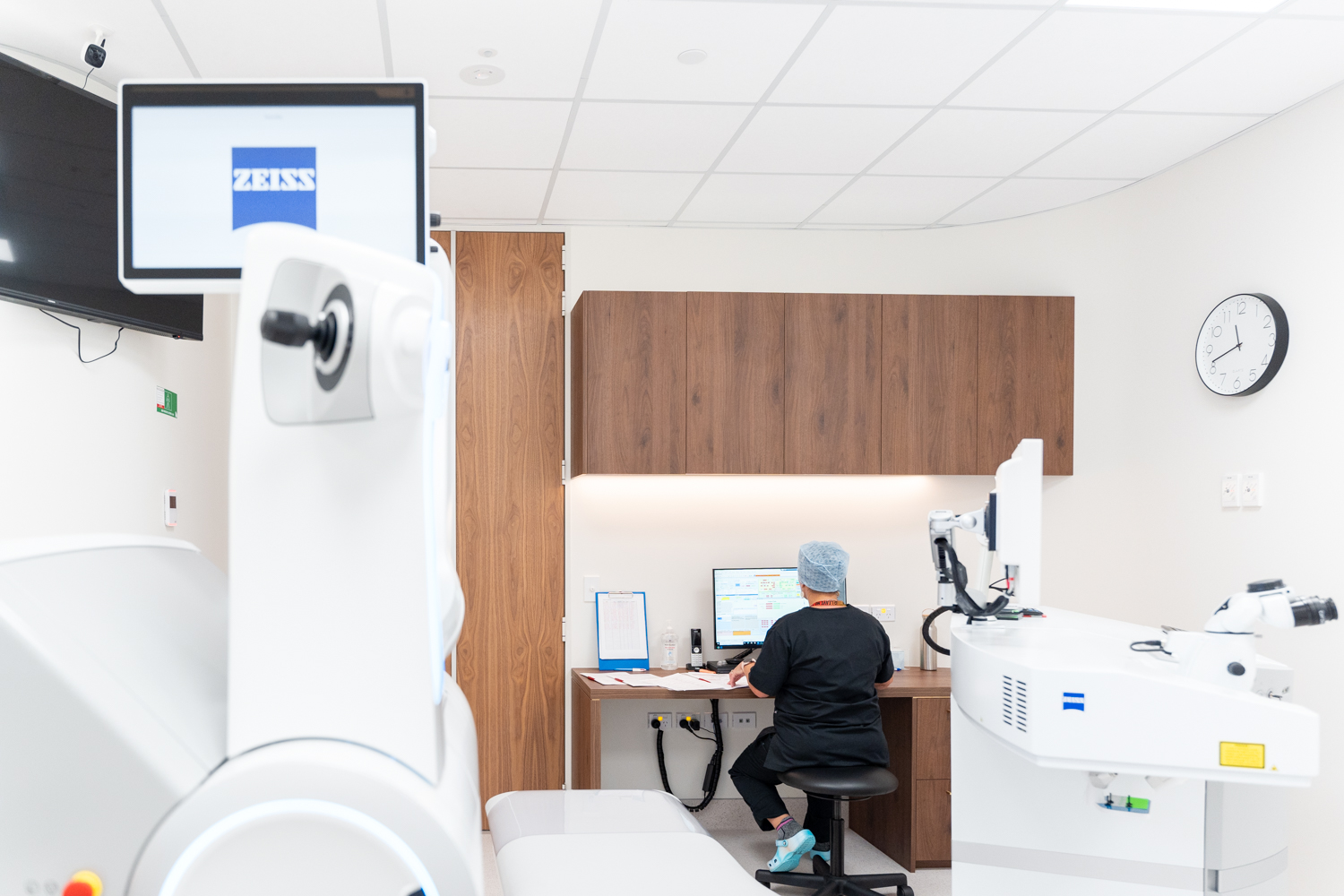Keratoconus
A progressive thinning and bulging of the cornea that causes distorted and blurred vision.


For over 30 years, we’ve helped thousands of Kiwis see clearly with expert care built on trust and real results. From your first consultation to post-surgery support, we’re here with personal, consistent care you can count on.

We go beyond the standard by partnering with ZEISS, a global leader in optical technology. Their advanced laser systems allow for precise, personalised treatment and consistently safe results across a wide range of vision conditions.
.jpg)
Our expert team supports you through every step of your laser eye journey, from surgery to personalised aftercare. With detailed post-op checks and ongoing follow-ups, we make sure you feel confident, informed and cared for.
Keratoconus and Corneal Cross-Linking (CXL)
Keratoconus is a progressive eye condition where the clear front surface of the eye. The cornea becomes thinner and begins to bulge outward into a cone shape. This affects how light enters the eye, leading to distorted and blurred vision. In most cases, keratoconus affects both eyes and gradually worsens over time.
Causes of Keratoconus
Although the exact cause of keratoconus remains unknown, several contributing factors have been identified:
- Genetic predisposition
- Collagen deficiency within the cornea
- Excessive eye rubbing
- Allergies or chronic eye irritation
- Overexposure to ultraviolet (UV) rays
- Eye injuries
- Underlying eye conditions
Symptoms of Keratoconus
Keratoconus typically begins during the teenage years or early adulthood and progresses slowly over several years. Because the changes in vision are gradual, early signs can often go unnoticed.
Common symptoms include:
- Blurry or distorted vision
- Astigmatism or increased short-sightedness (myopia)
- Light sensitivity or glare
- Halos around lights, especially at night
- Difficulty wearing contact lenses
- Frequent changes in glasses prescription
- Double vision in one eye
- Headaches caused by eye strain
How Keratoconus is Diagnosed
Diagnosis involves a thorough eye examination and specialised testing to map the shape and curvature of the cornea. These include:
- Keratometry – measures the curvature of the cornea
- Corneal topography – creates a detailed map of the cornea’s surface
- Visual acuity testing – measures clarity of vision
Early diagnosis is important to manage the condition effectively and monitor for progression.
Treatment Options
In its early stages, keratoconus can often be managed with glasses or soft contact lenses. As the condition progresses and the cornea continues to thin and change shape, more advanced treatment becomes necessary.
Corneal cross-linking can be a minimally invasive procedure used to stabilise the cornea and stop further progression of keratoconus. It works by strengthening the collagen fibres in the cornea.
CXL is typically recommended for patients who show signs of progression, regardless of age.
The Corneal Cross-Linking (CXL) Procedure
The cross-linking treatment takes approximately 45 minutes and is performed using anaesthetic eye drops.
Steps include:
- The surface layer of the cornea (epithelium) is gently removed.
- Riboflavin (vitamin B2) eye drops are applied every 2 minutes for 20 minutes to saturate the cornea.
- A UV light is directed at the cornea for 7–10 minutes to activate the cross-linking process.
- A soft, clear contact lens is placed on the eye to act as a bandage during healing.
The bandage lens is typically removed after five days, once the surface has healed.
What to Expect After Treatment
Corneal cross-linking is not a cure for keratoconus but is designed to prevent further deterioration. Glasses or contact lenses will still be required after the procedure to correct vision.
Why Early Treatment Matters
Early detection and prompt treatment usually result in better long-term visual outcomes. Regular monitoring allows your eye care specialist to determine if progression is occurring and whether cross-linking is needed.
So if you have been diagnosed with keratoconus or are experiencing any of the above symptoms, book a Vision+ Wellness check today. For early management plays a key role in preserving your vision.

Ready to See Clearly?
Join thousands of New Zealanders who’ve trusted Laser Eye Centre Hamilton to transform their vision.





.jpg)
